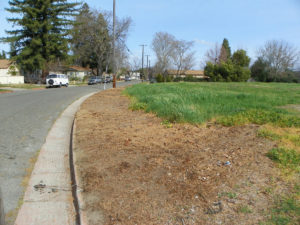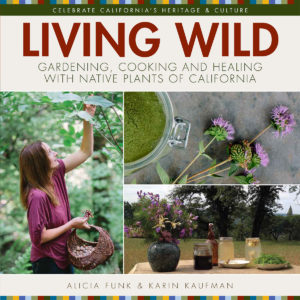Urban Wild in Sacramento
Spring is fast approaching. In the Sacramento Valley, that means the greens are up, trees are flowering, and very soon, young, tender leaves will be found among the vines. Sadly, this time of year is also spray-time for many, a time when they look out at their “pristine” yards and see enemies encroaching upon their artificially green carpets. Cities and counties, school districts and parks departments, too, begin pest management programs, which often include spraying for insects as well as the very plants you might hope to eat. Here are some tips for foraging in urban environs during late winter and early spring:
First, know your plants. In the Sacramento area, the only common plants that are dangerous to eat are hemlock and nightshade, but they are very, very dangerous, so it is best to definitely know what they look like. I can describe them to you here, but I won’t – instead, find some good pictures of them (there are many good pictures online). It’s also a good idea to know the plants you actually want to eat. For starters, claytonia (miners’ lettuce) is an excellent native plant that is easily identified and common in yards and edgelands. If you can’t positively identify a plant, snap a few pictures of it and come home to look it up. Young plants are especially difficult to identify, so be patient if this is your first time. Take notes of plant locations, and come back to visit them and see what they become.

Pesticide Spray Lines
Second, know your places. Of course, it is vital to know if you might be trespassing on private property, but it is also important to know who (if anybody) is managing the property and how they go about it. Many forage plants (especially natives) are ignored, but broad-leafed greens (the kind you probably want to eat) may be targeted for spraying. Look for unnatural colors or wilting of the leaves, and look for unnatural geometric patterns in the habitat (like straight lines of brown plants). These are sure signs of spraying. It’s easiest to know your own neighborhood, so start walking it with an eye towards finding native plants. Pointing out native flora and their benefits to property owners is also a good way to make friends and help spread the word in a positive and unique way.
Knowing your places also means learning about who else frequents these spots. People do interesting things, and where you find wonderful patches of greens, if you are observant you may find somebody cutting willows for caning or fishing a good spot. You also might run into other animals using your patch. Deer, raccoons, river otters, and others may live or commute through your favorite spots. A good book of tracks (none better than Olaus Murie’s famous guidebook) can open your eyes to a new, fascinating world at your feet.
Third, watch for things happening differently from what you expect. You may be intent on finding a particular plant, only to be disappointed to see that it has already flowered and you’ve missed the window. But don’t be discouraged: If your microclimate is behaving differently from the textbook (which are really just guidelines), then look for other things. You will probably be happily surprised to find things that others only dream about at that time of year: elderflower blossoms, perhaps, or young, perfect wild grape leaves for dolmas.
In Sacramento, no place is better than the American River Parkway for seeing native plants, but remember: No picking! However, throughout town one can find the hardier natives as well as natives the city has decided to cultivate or re-propagate, or those marginal spots, typically along creeks and park edges, where no soil tilling or spraying tend to reach. In these spots along Sacramento’s edgelands, you can find some delicious edibles—wild mushrooms, California mugwort, blue elderberries, wild roses and wild grapes.
The concrete, asphalt, glass and steel of the city can be intimidating, but along its edges, its creeks and rivers, Sacramento holds many plant treasures.
-Joshua Stark




